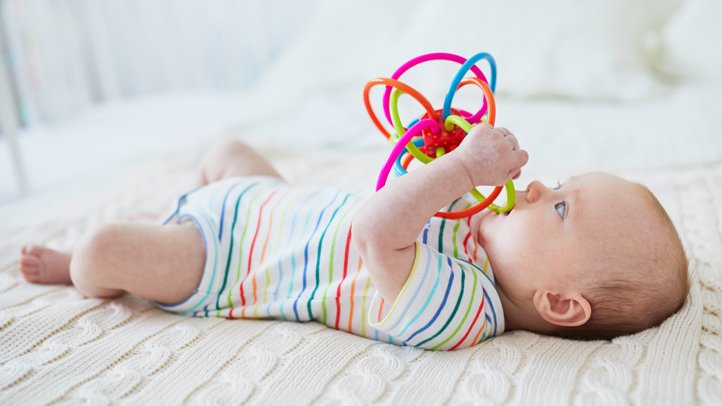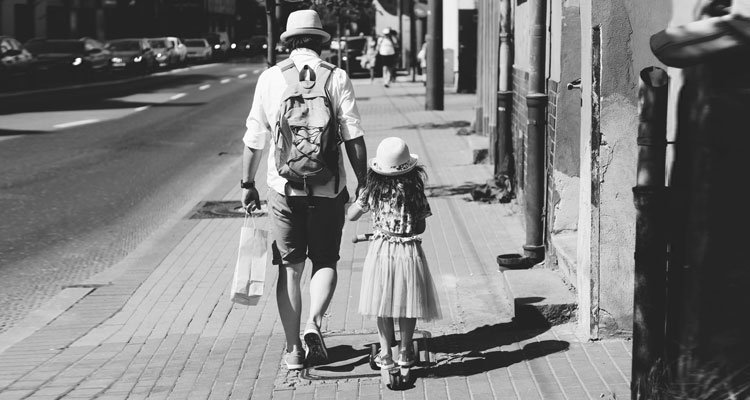Babies start playing with toys around three to four months old. At this stage, they begin reaching for objects, showing curiosity.
Their interaction with toys grows as they develop. Understanding when babies start playing with toys is essential for parents. It marks a key stage in their development. Toys play a crucial role in stimulating senses and promoting growth. They help babies explore textures, colors, and sounds.
This not only supports motor skills but also enhances cognitive abilities. During the first few months, babies observe and interact with their environment. Introducing toys provides them with tools to engage and learn. As they grow, their play evolves, becoming more complex. Parents can support this by offering age-appropriate toys. This ensures safe and enriching experiences. Observing these milestones offers joy and insight into a baby’s world.
Introduction To Baby Play
Babies typically start engaging with toys around three to six months of age. These early interactions help develop their senses and motor skills. Simple toys, like rattles and soft blocks, are perfect for stimulating curiosity and exploration.
### Introduction to Baby PlayWelcoming a baby into your life brings endless joy and curiosity. As your little one grows, you might notice their interest in the world around them, especially in toys. But when do babies start playing with toys, and why is it crucial for their development?Babies are naturally inclined to explore their environment. Even before they can hold a toy, they’re observing and learning. From the moment they can grasp objects, toys become an essential part of their world.###Importance Of Play
Play is not just fun; it’s foundational for growth. It helps babies develop their senses and fine motor skills. When your baby reaches out for a colorful rattle or a plush teddy, they’re not just having fun—they’re learning to coordinate their hand movements and eye focus.Play also fosters emotional development. It encourages self-expression and confidence. Each giggle and smile during playtime strengthens their emotional bonds with you and others. Imagine the joy when your baby first recognizes their favorite toy!###Role In Development
The toys your baby plays with contribute significantly to their cognitive development. Simple toys that stimulate the senses can enhance problem-solving skills and creativity. A soft book with textures can spark curiosity and imagination.Toys also play a role in social skills. When your baby starts to share toys or play alongside others, they’re learning essential social interactions. These small interactions lay the groundwork for empathy and cooperation in the future.Have you ever noticed how your baby prefers certain toys? This preference is a sign of developing personality and decision-making skills. As you observe these choices, you’re getting a glimpse into your baby’s emerging identity.Reflect on how your baby engages with toys. What have they taught you about their unique personality? These moments are precious, offering insights into the wonderful little person they’re becoming.Newborn Sensory Exploration
Babies begin playing with toys around three to four months old. This stage marks their first steps in sensory exploration. Their tiny fingers grasp, feel, and learn. Bright colors and soft textures captivate their attention, sparking curiosity and early development.
Newborns enter the world with a desire to explore. Their senses are the key to understanding this new environment. Sensory exploration begins from birth. Babies use touch, sight, and sound to learn. Toys play a crucial role in this early development. Through sensory play, newborns start making connections.First Interactions
During the first weeks, babies are curious. Their eyes might follow bright colors. They respond to sounds with interest. Simple interactions occur as they reach for objects. They grasp toys that fit their tiny hands. These first interactions lay the foundation for sensory growth. Parents notice how their newborn focuses on different stimuli. It’s amazing to watch as babies begin to engage with their surroundings.Sensory Toys
Sensory toys stimulate a baby’s senses. Soft rattles make gentle sounds. Textured toys offer various surfaces to feel. Brightly colored toys attract their attention. These toys are designed for exploration. They enhance sensory development through play. Parents often choose toys with different textures and sounds. It’s beneficial to select toys that encourage interaction. Babies learn through these tactile experiences. Sensory toys are essential in early development. They help babies discover the world around them.Tummy Time And Reaching
Babies begin playing with toys around three to four months. During tummy time, they often reach for nearby toys. These moments help develop motor skills and hand-eye coordination.
As your baby grows, you’ll notice them becoming more curious and eager to explore. “Tummy time” is a crucial phase in your baby’s development. It not only strengthens their muscles but also prepares them for the exciting world of toys. Imagine watching your baby stretch out on the floor, reaching for that colorful toy just a few inches away. This is a milestone moment, and it’s all about developing those motor skills.Developing Motor Skills
During tummy time, your baby is working hard to build essential motor skills. It’s fascinating to see them push up on their tiny arms, lift their head, and eventually roll over. These movements lay the foundation for crawling and walking.Encourage your baby by placing toys just within reach. This motivates them to stretch and grasp, helping them develop hand-eye coordination. Have you noticed the way your baby beams with pride when they finally touch that toy? It’s a priceless moment that reflects their growing independence.Toys For Tummy Time
Choosing the right toys can make tummy time more engaging. Opt for bright, textured toys that captivate your baby’s attention. Soft mirrors, crinkly books, or toys with gentle sounds are fantastic options.Place these toys around your baby to promote movement and exploration. Watch as they wiggle and reach, driven by curiosity.Have you ever tried a tummy time pillow? This simple tool can elevate your baby’s chest, making it easier for them to reach their toys. It’s an excellent way to keep them happy and active during tummy time.Tummy time is more than just play; it’s an adventure that sparks joy and fosters growth. As you watch your baby reach for their favorite toy, you’re witnessing the beginning of their lifelong journey of learning and discovery. What toy will your baby reach for today?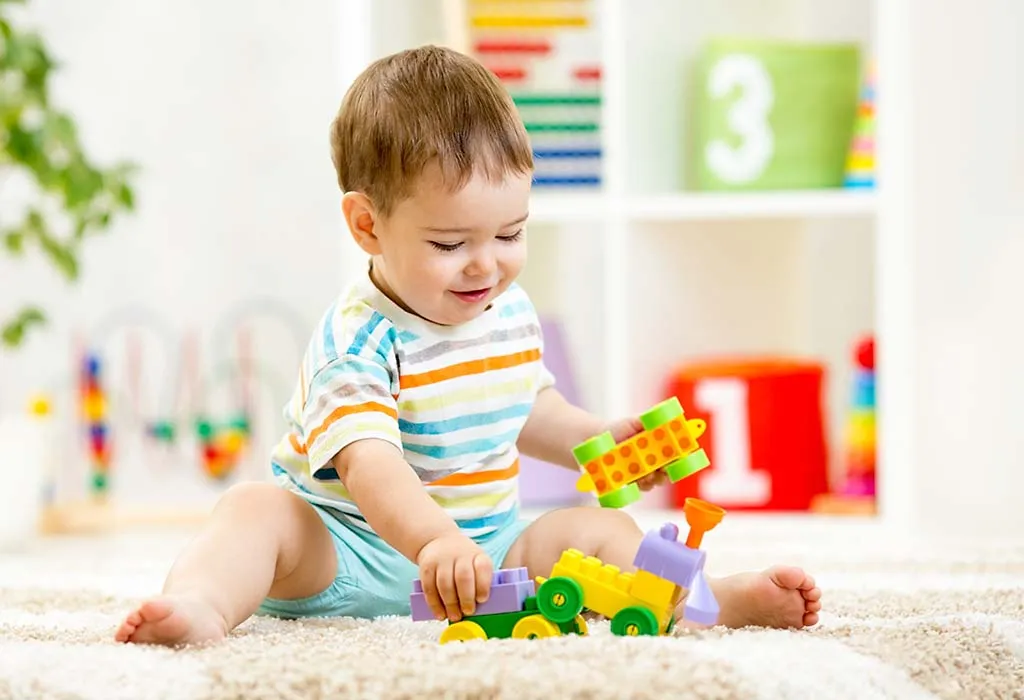
Credit: tocgrp.com
Grasping And Holding Objects
Understanding when babies start grasping and holding objects is a fascinating journey of discovery. It marks an exciting milestone in your little one’s development. As they begin to engage with the world around them, toys become crucial tools in nurturing their growth.
Hand-eye Coordination
Hand-eye coordination is a skill that starts developing early. You might notice your baby reaching for objects around the age of three to four months. It’s a thrilling moment when they successfully grab a toy for the first time.
Imagine the look of concentration as they try to touch the bright colors of a rattle. With each attempt, they learn to align what they see with their actions. This process helps strengthen their motor skills.
Have you ever watched a baby trying to pick up a toy and felt a sense of awe at their determination? This is the foundation of hand-eye coordination, a skill they’ll use for life.
Recommended Toys
Choosing the right toys can significantly impact your baby’s development. Soft, colorful toys that are easy to grasp are perfect for little hands. They encourage exploration and stimulate curiosity.
Consider toys with different textures and sounds. These elements keep your baby engaged and make playtime more enjoyable. Blocks, rings, and soft balls are excellent choices as they are safe and encourage interaction.
Did you know that toys can also promote social skills? Playing with others or even with you helps your baby learn sharing and communication. So, what toys will you choose to support your baby’s growing skills?
As you watch your baby play, remember each grasp and hold is a step forward in their development. Celebrate these moments and enjoy the journey together!
Cause And Effect Play
Cause and effect play is an exciting milestone for babies. It’s a time when they learn that actions have consequences. This type of play helps babies understand how the world works. They begin to realize that their actions can cause something to happen. For instance, pressing a button can make a toy light up or play music.
Understanding Actions
Babies start understanding actions around six to nine months. During this period, they explore their environment with curiosity. They love to test how things work. Dropping a toy can teach them it makes a sound. This is a simple cause and effect. Babies enjoy repeating actions to see the same result. It helps them build confidence in their abilities.
Interactive Toys
Interactive toys are perfect for cause and effect play. These toys respond to actions with lights, sounds, or movement. A simple rattle can introduce babies to cause and effect. Shaking the rattle makes noise, which excites them. Electronic toys with buttons are also popular. They help babies learn that pressing a button has an outcome. Choose toys that are safe and suitable for their age. They should be easy to hold and explore.
Imitation And Pretend Play
Babies love to explore their world through imitation and pretend play. This natural curiosity helps them learn and develop essential skills. As they grow, they mimic actions and sounds they observe. This imitation is a vital part of their playtime. It forms the foundation for more complex pretend play activities.
Pretend play encourages creativity and problem-solving. It allows babies to experiment with different scenarios. Through this, they learn about their environment and social roles. This type of play is crucial for their cognitive and social development.
Role Of Imagination
Imagination plays a pivotal role in a child’s development. It fuels their creativity and helps them understand the world. When babies engage in pretend play, they use their imagination to create stories. They assume different roles and experiment with outcomes. This process enhances their cognitive growth and emotional understanding.
Imaginative play also boosts language skills. Babies learn new words and phrases as they play. They practice communication and storytelling. These activities lay the groundwork for effective communication skills.
Ideal Pretend Toys
Choosing the right toys can enhance a child’s play experience. Simple toys like dolls, blocks, and kitchen sets are excellent for pretend play. They offer endless possibilities for creative exploration. Dolls allow children to act out different scenarios. Blocks can become anything from houses to castles. Kitchen sets introduce them to the world of cooking and sharing meals.
These toys also foster social interaction. Playing with others teaches cooperation and turn-taking. It helps children understand relationships and develop empathy. Providing a variety of pretend toys encourages diverse play experiences.
Social And Cooperative Play
Babies typically begin playing with toys around four to six months old. At this stage, they start exploring objects through touching and mouthing, which helps develop their motor skills. Playtime encourages social and cooperative play, laying the foundation for future interactions and learning experiences.
Babies start exploring the world with curiosity. As they grow, their play becomes more social. Social and cooperative play begins around 9 to 12 months. At this stage, babies notice others and want to interact. They learn by watching and imitating those around them. This is a crucial time for developing social skills.Playing With Others
Playing with others is exciting for babies. They enjoy the company of siblings and friends. Babies begin to engage in simple games like peek-a-boo. These interactions build bonds and trust. They laugh and smile, showing their joy. Parents can encourage this by organizing playdates.Toys For Sharing
Toys for sharing are essential during this phase. Blocks, balls, and musical toys work well. They encourage group play and cooperation. Babies learn to take turns with these toys. This helps them understand sharing and patience. Choose toys that are safe and easy to clean. Varied textures and colors captivate their interest. “`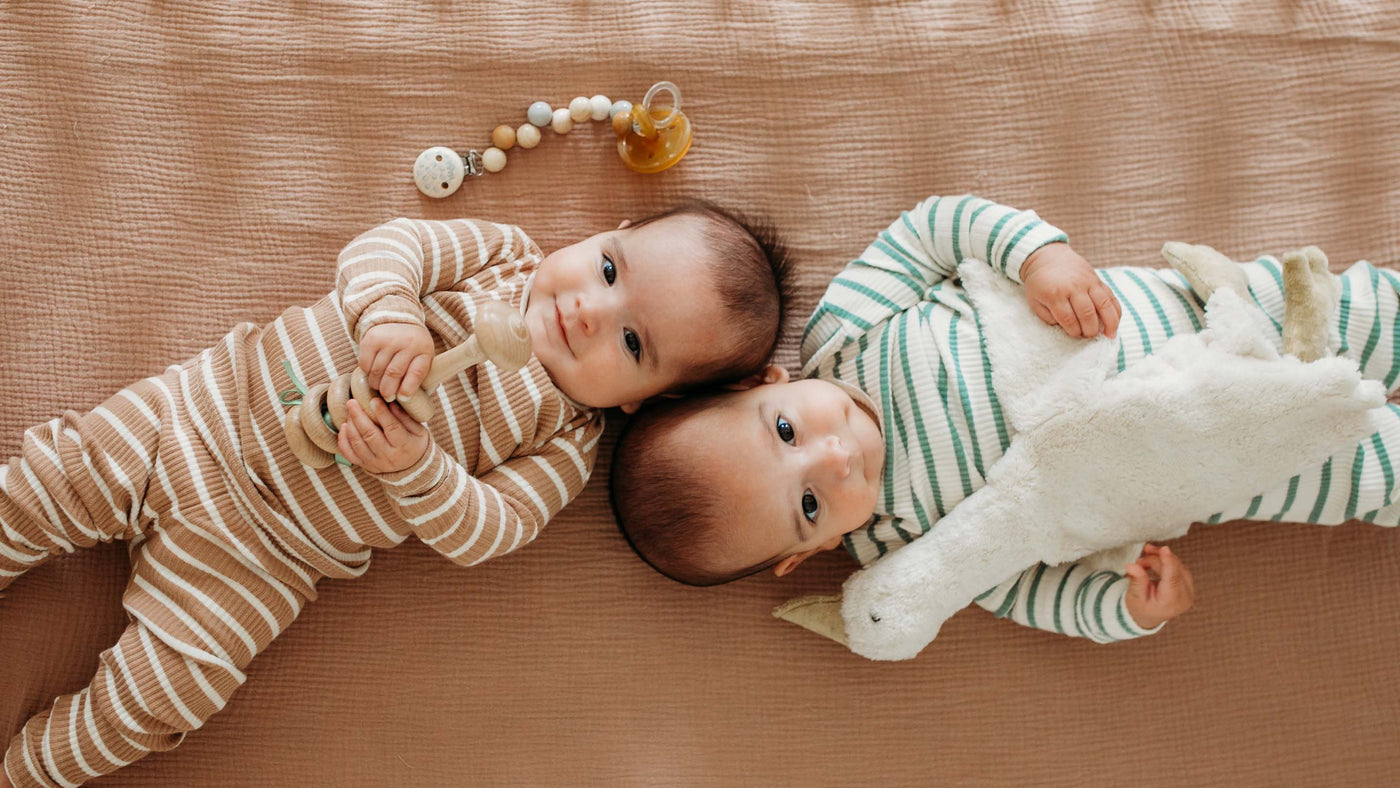
Credit: www.habausa.com
Safety Considerations
Babies start playing with toys around three to six months old. Ensure toys are safe, without small parts or sharp edges. Choose age-appropriate items to prevent choking hazards.
When babies start exploring the world, their toys become their best friends. However, ensuring these toys are safe is crucial. As parents, you want to give your child the joy of play without any risks. Safety considerations are not just a checklist; they are a mindset to protect your little one as they grow and learn.###Choosing Safe Toys
Selecting toys for your baby involves more than just picking the cutest or most colorful option. Check for small parts that could pose a choking hazard. Toys should be large enough that they can’t fit in your baby’s mouth.Pay attention to materials. Toys made from non-toxic and BPA-free materials are safer for babies who love to chew on everything. A quick check for sturdy construction is also wise. Fragile toys with sharp edges can cause injuries.Certification marks like CE or ASTM can offer peace of mind. These indicate that toys meet safety standards. When shopping, look for these marks to make informed choices.###Age-appropriate Toys
Toys should match your baby’s developmental stage. A rattle might captivate a newborn, but a two-year-old may find it boring. Manufacturers often provide age recommendations. These are based on safety and developmental appropriateness.Consider your baby’s current skills. If they’re starting to crawl, a toy that encourages movement can be exciting. On the other hand, a toy that’s too advanced might frustrate them.Observe how your baby interacts with their toys. This can guide you in choosing new ones. A toy that becomes a favorite can offer insights into what your baby enjoys and learns from.How do you ensure your baby’s toys are both safe and engaging? Your thoughtful choices can make playtime a safe haven for exploration and joy.Encouraging Play At Home
Babies begin exploring toys around three to four months old. Their curiosity grows as they develop motor skills. Simple toys like rattles or soft blocks capture their attention, encouraging exploration and play.
Encouraging play at home is essential for your baby’s development. It’s not just about keeping them entertained; it’s about nurturing their curiosity and imagination. Creating an environment that fosters play can make a significant difference in how your child interacts with the world around them.Creating Play Spaces
Designing a play space doesn’t require a lot of room or expensive toys. You can start with a simple corner in your living room or even a section of the nursery. Use a soft rug or mat as a base where toys can be scattered safely.Add a variety of toys that cater to different senses—colorful blocks, textured balls, or musical toys. Rotate them regularly to maintain interest and avoid clutter. This helps in stimulating your baby’s senses and keeps the play area fresh and inviting.Consider safety first. Ensure that all toys are age-appropriate and free of small parts that could be swallowed. Regularly check for any broken pieces to avoid accidents.Parental Involvement
Your involvement in playtime is as crucial as the toys themselves. Engage with your baby by sitting down at their level and joining the fun. Your presence offers comfort and encourages them to explore more.Narrate what you’re doing while playing. Saying things like, “Let’s build a tower,” or “Can you find the red block?” helps in developing their language skills. Your voice becomes a familiar and reassuring guide.Challenge yourself to be creative. Turn ordinary household items into exciting toys. A wooden spoon and a pot can transform into a drum set. This not only sparks creativity but also shows your baby that play is everywhere.Have you noticed how your baby’s eyes light up when you join in the fun? How do you incorporate play into your daily routine? Making play a shared adventure can make it a cherished part of both your lives.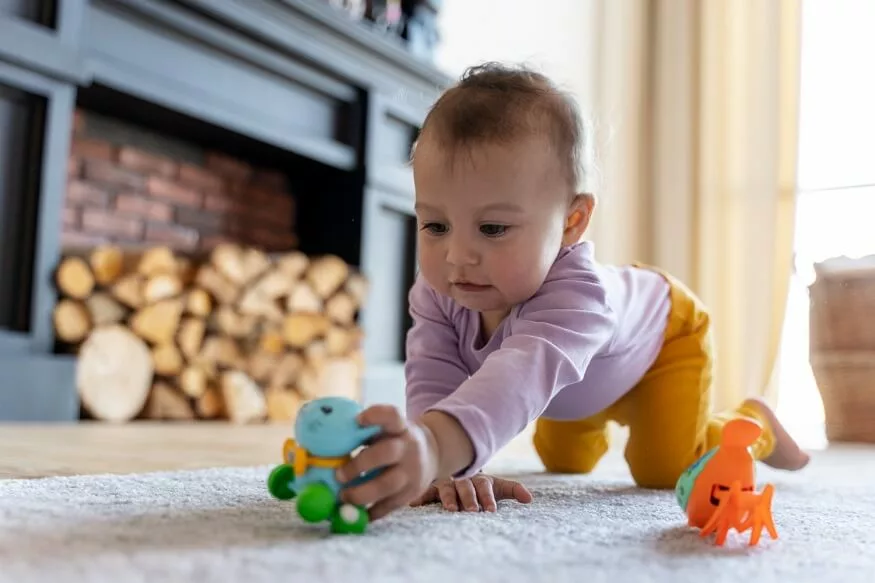
Credit: www.euroschoolindia.com
Frequently Asked Questions
When Should I Introduce Toys To My Baby?
Introduce toys when your baby shows interest, usually around 3 to 4 months old. Choose safe, stimulating toys that encourage exploration and development. Soft toys, rattles, and teething rings are great options. Always supervise playtime to ensure safety and engagement.
Adjust choices as your baby grows and develops new skills.
Can 3 Month Old Play With Toys?
Yes, a 3-month-old can play with toys. Choose soft, lightweight toys that are easy to grasp. Bright colors, gentle sounds, and different textures stimulate their senses. Always supervise playtime to ensure safety. These activities help develop motor skills and curiosity.
What Should My Baby Be Doing By 2 Months?
By 2 months, babies smile, follow objects, and recognize parents. They coo, gurgle, and lift their heads briefly.
At What Age Do Babies Start Playing With Toy Cars?
Babies typically start playing with toy cars around 12 to 18 months. At this age, they enjoy pushing and pulling toys. Toy cars can help develop motor skills and stimulate imagination, making them popular choices for toddlers. Always ensure toys are age-appropriate and safe.
When Do Babies Start Playing With Toys?
Babies usually start playing with toys at around 3 to 4 months. They show interest by reaching and grabbing.
Conclusion
Babies grow quickly, and toys play a big role in their development. They start exploring toys as early as three months. Bright colors and soft textures attract them. Toys help babies learn about the world around them. They improve motor skills and encourage creativity.
Parents should choose age-appropriate toys for safety. Simple toys often work best. Keep an eye on your baby during playtime. Their interaction with toys is a sign of growth. Watching them play is a joy. Celebrate each milestone. Enjoy these moments; they pass by fast.


